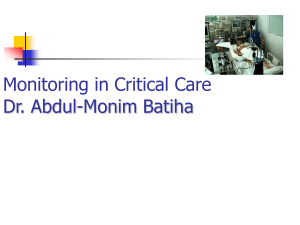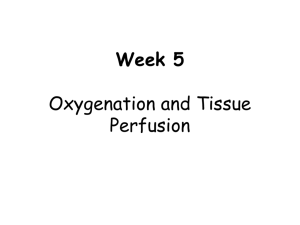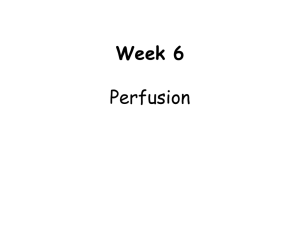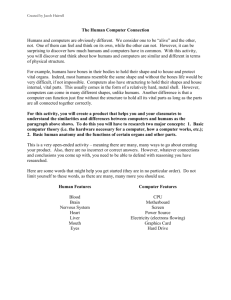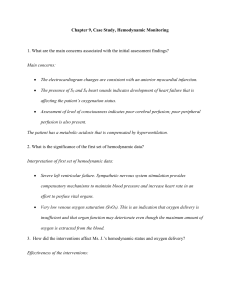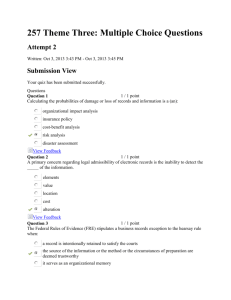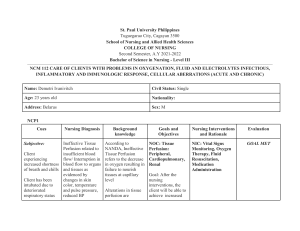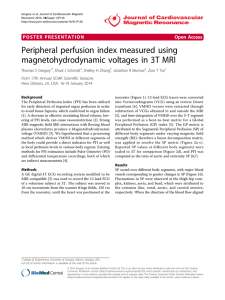Early Recognition of the Deteriorating Patient
advertisement
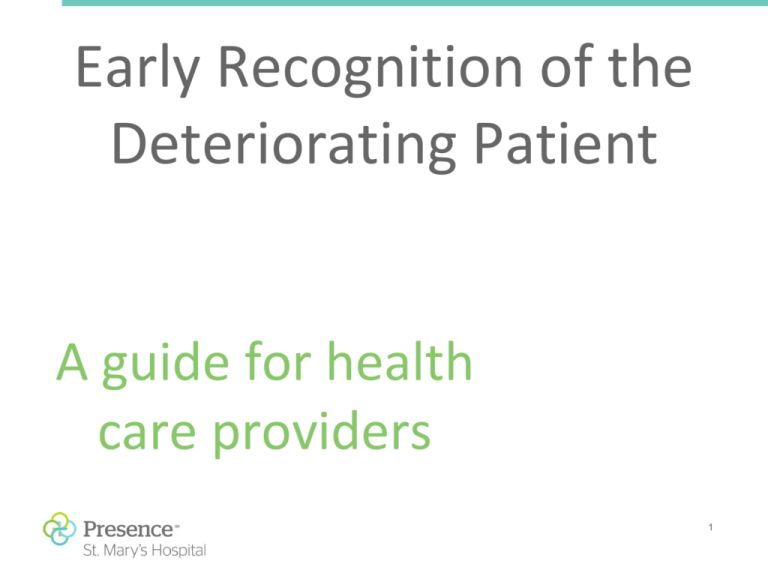
Early Recognition of the Deteriorating Patient A guide for health care providers 1 Purpose • To catch the patient and intervene when compensatory mechanisms are kicking in, not once they have already failed. • Early recognition of subclinical signs with resulting interventions produce better patient outcomes 2 What are Subclinical Signs • Tell you that the patient is failing. • Through compensatory mechanisms, he is still able to maintain and keep his vital signs “normal”. • Goal – Recognize and intervene before the crisis occurs. 3 The Look Test How does your patient look in regards to: • Color – Skin color is a factor of pigmentation and oxygenation and perfusion in the capillaries. People are not supposed to change color. • Effort and Fatigability – How hard is the patient working to maintain his vital signs? – How long will he be able to keep going before his vital signs start to deteriorate? • Diaphoresis (Sweating) – Sign of maximal sympathetic stimulation; the patient is using the last of everything he has to maintain vital signs. 4 The Look Test cont. • Mentation – One of the earliest signs of inadequate oxygenation is a change in mentation. • Signs of Inadequate Perfusion – Relaxation of Ear and Nose Cartilage: With lack of oxygenation and perfusion, the cartilage becomes soft, causing the ears to lay back against the head. Nasal Cannula keeps falling off. – Knee and Scrotum mottling – Generalized Pallor – GI Symptoms: Indigestion, heartburn, constipation, nausea and loss of appetite can all be signs of heart failure due to vasoconstriction in the gut. • Voice Quality – Indicates oxygenation and perfusion – Clarity of ideas and strength of the voice – The number of words the patient can string together in a sentence before gasping for breath is an indication of tidal volumes the patient is able to generate 5 Vital Signs • Vital Signs – One set of vitals standing alone is meaningless. Evaluate over the course of time – Know a patient’s trend and where that number falls along that patient’s continuum. • If the VS number does not make sense, repeat it. If it still does not make sense, get a second nursing opinion. • Does the HR on the pulse ox machine correlate with apical HR? • How was the measurement taken (manual or automatic)? • If you cannot obtain a reading, why? – Check the patient with a manual BP cuff, listen to apical HR, count the respirations. – ask for an order for an ABG if the patient’s SaO2 is not reading. 6 First Two Signs of Compensation •HR and RR start to climb 7 Heart Rate • An elevated HR is a sign of your patient using a compensatory mechanism. • Heart rate will go up when there is a greater need for oxygen by the cell (i.e. response to injury, exercise), or when there is not an adequate supply of oxygen to bring to the cell (hypovolemia, anemia, hypoxia). 8 Respiratory Rate • The symptoms of hypoxemia are identical to the symptoms of anxiety, including: restlessness, confusion, agitation, combativeness • Never medicate a patient for symptoms of “anxiety” until you rule out hypoxemia as a cause. • Most common causes of increased respiratory rate is hypoxemia or compensation for metabolic acidosis. 9 Blood Pressure • Change in blood pressure can occur rapidly or gradually based on the presenting condition. • Watch trends; know your patient’s baseline. • Whether your patient is hyper- or hypotensive, it is all about tissue perfusion. BP that is too high or too low will not adequately oxygenate the tissues. • Is the patient symptomatic? 10 Urine Output • Urine output starts to drop off long before it becomes too low or abnormal. • LOOK AT THE TRENDS FOR URINE OUTPUT. When it starts declining, you may have a perfusion problem. 11 Rapid Response Team • Purpose – To provide urgent medical assistance and interventions for patients who experience an acute medical event to promote better patient outcomes. • RRT Members: ICU Nurse, Respiratory Therapist, Nurse assigned to patient 12 When to Call RRT • “Being worried about a patient” • “Having a gut feeling” • Acute changes: HR <40 or >130 BP<90 and symptomatic Respiratory rate <6 or >30 Changes in Neuro status Saturation <90% despite oxygen New onset or repeated seizure activity 13 Calling a RRT • Any Patient Care Provider can call an RRT • DIAL 71 • Ask operator to call Rapid Response and give the patient’s room and bed number 14
